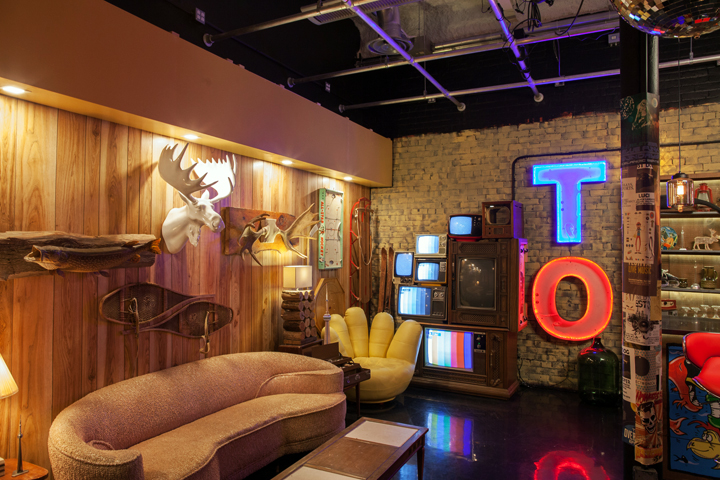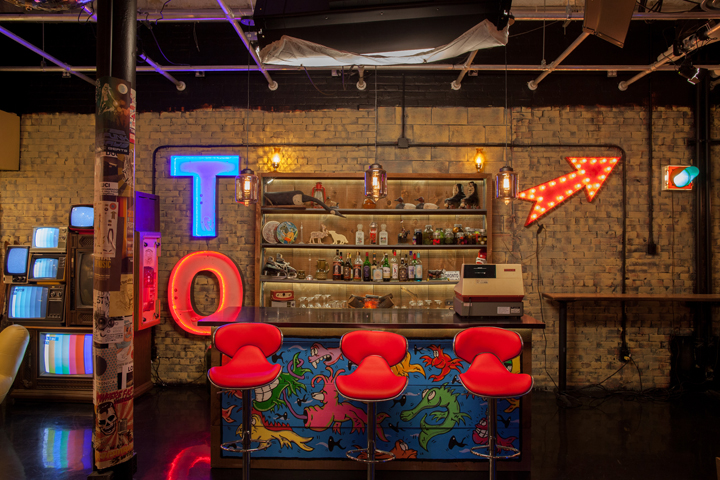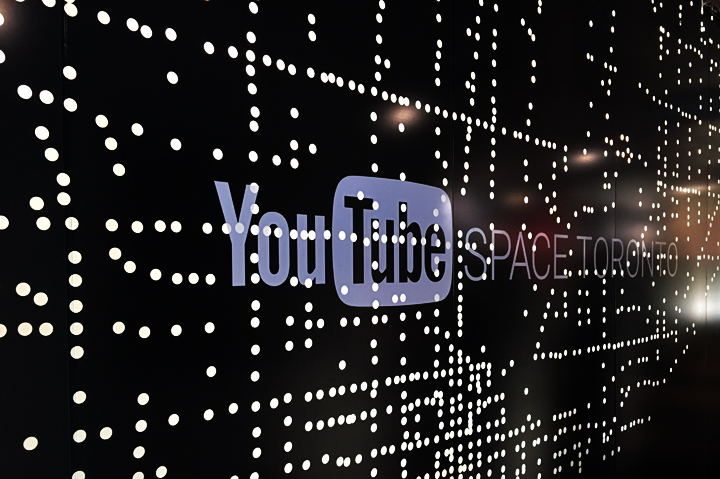Google’s new Toronto-based YouTube Space studio is undoubtedly Canadian.

A ceramic moose head, a pair of snow shoes and even a vintage tabletop hockey game adorn the wall of Studio 1. In an ode to the city picked for the first Canadian YouTube collaboration space, there are two CN tower replicas that will one day make a cameo in a creator’s video.
YouTube Space Toronto officially opened its doors to content creators Tuesday at the George Brown School of Design.
The 3,500 square foot facility will act as a place for YouTube personalities, and those getting started on the platform, to collaborate and create content.
READ MORE: Meet the people making millions doing mundane things on YouTube
The collaborative facility will be available to YouTubers at no cost. YouTubers who are just starting their channels will be able to attend events and workshops that will share tips and tricks to get the most out of YouTube.
The studio will also play host to well-known Canadian YouTube personalities who already boast millions of subscribers.
YouTubers with over 10,000 subscribers will have access to two studio spaces – a ready set and one set up for virtual reality and 360 degree video – and loaner production equipment including lights, microphones and rotating sets.
IN PHOTOS: A look inside YouTube Space Toronto
YouTube Space Toronto is the ninth of its kind in the world – joining studios in Tokyo, Los Angeles, London, Paris, New York, Brazil, Mumbai, and Berlin – and the first in Canada.
“Toronto itself is such a diverse fabric of creators and we really wanted to capture that. Each space really takes on the personality of the city it’s located in and Toronto is just this very exciting city with a great creative history to it,” said Chris D’Angelo, global head of production and programming for YouTube Spaces.
According to D’Angelo, the goal of YouTube Spaces is to help create better storytellers and allow YouTubers to make the most out of the video-sharing platform, which garners over 25 million unique video views per month in Canada alone.
Of course, by helping content creators produce better videos, YouTube will also see a return on investment.
- Ont. First Nation calls for chemical plant to be shut down amid ‘dangerously high’ benzene levels
- Ottawa looks to launch national flood insurance program within 12 months
- Nova Scotia scraps spring bear hunt idea, public ‘very divided’ on issue
- Alberta, coal lobbyists talked for years about more open-pit mining in the Rockies: documents
Let’s not forget, Google benefits from content creators who create millions of dollars in advertising revenue. The company is also pushing for more original content as it tries to grow subscriptions to its YouTube Red service – not currently available in Canada – which allows ad-free and offline viewing.
But a growing number of people have managed to turn YouTube into a full-time career – and make good money doing it.
READ MORE: ‘Haters gonna hate’: YouTube star PewDiePie on making $7.4M last year
For example, in 2015 YouTube star Felix Kjellberg — aka “PewDiePie” — made headlines after it was revealed he earned $7.4 million from his YouTube account and various merchandise ventures.
Canada is already home to many YouTube success stories, including AsapSCIENCE (5.1 million subscribers), Unbox Therapy (4.3 million subscribers) and The Sorry Girls (522,000 subscribers).
And for those who have always wondered how to be successful on the platform, YouTube Space Toronto may be the place to learn.
Wright and MacDermaid made their first DIY video back in 2010 and have been creating ever since, growing their audience to just over half a million subscribers to date.
When The Sorry Girls first started out, they applied to be a part of YouTube’s Partner Program which allows creators to monetize their content on the platform by way of advertisements, paid subscriptions and merchandise.
“I remember being like ‘Mom, we made 17 cents today,’ and she was just like ‘Good job honey, stay in school,’” MacDermaid laughed. “But little did she know this has grown into our career.”
Within their first year, the Sorry Girls began to grow a substantial user base, allowing them to see more advertising revenue. In September 2015, the girls committed themselves to going full time with the project and making YouTube their career.
How do people make money on YouTube?
So how exactly do people make a career out of making YouTube videos?
Once you have gained a large enough subscriber base and your videos are racking up a good number of views, you are able to enable your channel for monetization.
YouTubers make money through ads that run on their videos.
Every monetized YouTube channel has a CPM, which stands for “cost per thousand” – a dollar figure that fluctuates depending on what type of ads play on your videos. For example, if you had a $2 CPM, you would make $2 for every 1,000 video views.
However, YouTube takes a cut of that revenue. That means the average YouTuber with modest views won’t make a living off views alone.
But personalities also make money by doing brand deals – which usually involves doing a product placement, review, or simply doing a “shout out” to a brand.
Once they gain a big enough following, they might launch a line of merchandise, or be featured at events that fans buy tickets to see.















Comments